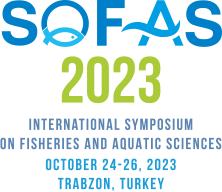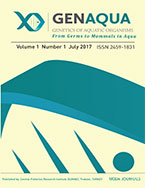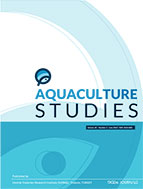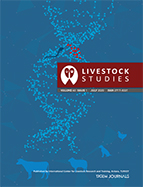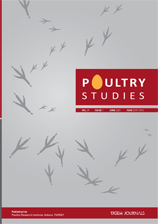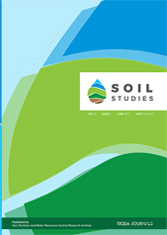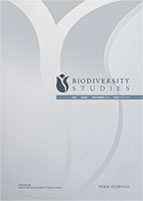Turkish Journal of Fisheries and Aquatic Sciences
2026, Vol 26, Num, 3 (Pages: TRJFAS28144)
Comparative Analysis of Various Trawl Codend Selectivity for Red Mullet (Mullus barbatus) and Whiting (Merlangius merlangus) in the Black Sea
2 Isparta University of Applied Sciences, Faculty of Eğirdir Fisheries, 32200 Isparta, Türkiye
3 İstanbul University Faculty of Aquatic Sciences, 34134 Fatih-İstanbul, Türkiye
4 Ege University, Faculty of Fisheries, 35100 Bornova-İzmir, Türkiye
5 İstanbul University-Cerrahpaşa, Technical Sciences Vocational School, İstanbul, Türkiye DOI : 10.4194/TRJFAS28144 Viewed : 446 - Downloaded : 506 The aim of this study was to estimate the selectivity of 40 mm (40D) and 44 mm (44D) diamond mesh size, 40 mm square (40S), and turned (40T) mesh codend for red mullet (Mullus barbatus) and whiting (Merlangius merlangus). Samples were collected from two locations in the western Black Sea during 21-28 July 2020 covered codend method was used in experiment. For red mullet, the mean fifty-percent retention length (L50) values for 40D, 40S, 40T and 44D were estimated as 8.55 (8.02–8.93) cm, 12.04 (11.03–12.80) cm, 11.46 (10.11–11.99) and 13.23 (12.69–13.71) cm respectively. L50 values of 40D, 40S, 40T and 44D were determined as 10.06 (8.59–12.58) cm, 15.61 (14.74–16.24) cm, 15.45 (14.48–15.54) cm, 13.56 (12.63–14.11) cm for whiting, respectively. The calculated L50 of the commercially used 40D codend was lower than the Minimum Conservation Reference Size (MCRS) for red mullet and whiting (13 cm). All experimental codends improved the size selectivity of the studied species compared with the legally allowed minimum mesh size (40 mm). In addition, the discard rate for red mullet using the 40D codend, which is commonly employed in the Black Sea, was found to be 97.90%. The implementation of 40S codends could reduce this rate to approximately 84.57%. Similarly, for whiting, the discard rate decreased from approximately 74.09% to 59.03%, depending on the experimental codends. The size selectivity and exploitation pattern of codends for red mullet and whiting could be improved by simply changing to square (40S) or turning (40T) meshes, based on MCRS. Also, the present study provides the scientific foundation for the regulation concerning the increase of the codend mesh size of diamond 44 mm in trawl fishing in the Black Sea, which is scheduled for implementation in 2028. Keywords : Discards Size selectivity Sustainability Trawl fisheries Western Black Sea



